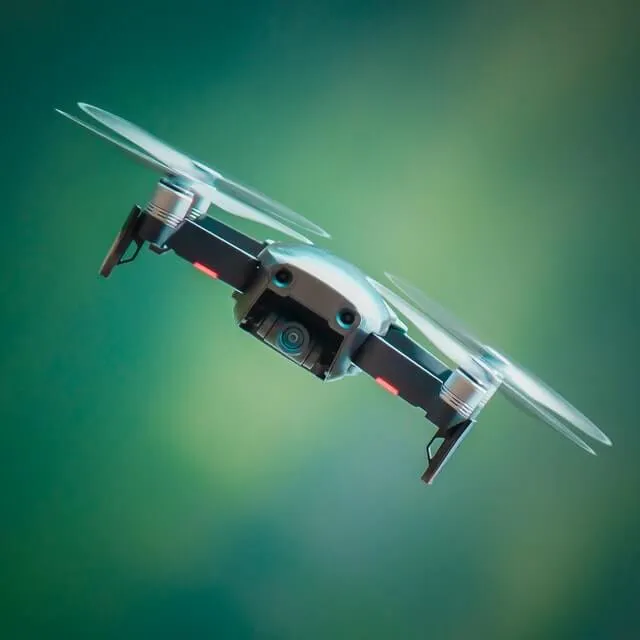Skywatch is keeping you informed about all of the new regulations and how they will affect you and your business.


The wait is finally over. On August 7, 2025, the Federal Aviation Administration (FAA) officially released the long-awaited Part 108 Notice of Proposed Rulemaking (NPRM), marking a revolutionary moment for commercial drone operations in the United States. This comprehensive 650+ page document represents the most significant advancement in drone regulations since Part 107 was introduced in 2016.
What is Part 108?
Part 108 establishes a new regulatory framework specifically designed for Beyond Visual Line of Sight (BVLOS) drone operations. Unlike the current Part 107 rules that require pilots to maintain visual contact with their aircraft, Part 108 will enable operators to fly drones at distances far beyond what the human eye can see, opening unprecedented opportunities for commercial applications.
The new regulations support operations at or below 400 feet above ground level in FAA-approved areas, with drones weighing up to an impressive 1,320 pounds – a massive increase from Part 107's 55-pound limit. This expansion enables everything from large-scale package delivery operations to industrial surveying missions that were previously impossible or prohibitively complex.
Key Changes That Will Transform Your Business
Streamlined Authorization Process: Gone are the days of lengthy, case-by-case waiver applications for BVLOS operations. Part 108 introduces two pathways: permits for lower-risk operations and certificates for more complex missions. This standardized approach will dramatically reduce regulatory barriers and accelerate time-to-market for commercial drone services.
Corporate Responsibility Model: The FAA is shifting responsibility from individual pilots to organizations. Companies will now be accountable for ensuring their personnel meet training requirements and operational standards. This change reflects the evolution toward more sophisticated, enterprise-level drone operations.
Automated Data Service Providers (ADSPs): The new framework introduces third-party data services that will provide real-time information to help operators avoid conflicts with other aircraft. These services will be crucial for maintaining safety in increasingly busy airspace.
Performance-Based Standards: Rather than prescriptive rules, Part 108 emphasizes performance-based regulations where manufacturers set operational limits for their aircraft. This approach allows for innovation while maintaining safety standards.
Industry Applications Getting the Green Light
Part 108 explicitly enables several commercial applications that have been waiting in the wings:
- Package Delivery: Large-scale drone delivery services can finally move beyond pilot programs
- Agricultural Operations: Enhanced crop monitoring, spraying, and surveying capabilities
- Infrastructure Inspections: Power lines, pipelines, and telecommunications infrastructure can be monitored more efficiently
- Emergency Response: Public safety agencies gain expanded capabilities for search and rescue operations
- Aerial Surveying: Large-area mapping and monitoring projects become economically viable
Watch our friends at Pilot Institute break down the new Part 108 regulations in detail:
What This Means for Your Operations
For existing Part 107 operators, Part 108 represents both an opportunity and a strategic decision point. The regulations are designed for sophisticated operations, requiring substantial operational planning, cybersecurity measures, and potentially significant equipment investments.
Companies operating larger fleets or seeking to expand beyond current Part 107 limitations should begin preparing now. This includes evaluating equipment requirements, developing operational procedures, and considering whether permit-level or certificate-level operations align with business objectives.
Timeline and Next Steps
The NPRM is now open for public comment until October 6, 2025. This 60-day period is crucial for industry stakeholders to provide feedback that could shape the final regulations. Following the comment period, the FAA will review submissions and issue the final rule, expected sometime in 2025.
The Trump Administration's "Unleashing American Drone Dominance" Executive Order has given the FAA 240 days to finalize the rule, emphasizing the urgency to establish American leadership in the global drone industry.
Official Resources and Further Reading
For those wanting to dive deeper into the technical details, you can access the complete Part 108 NPRM directly from the Federal Register: Normalizing Unmanned Aircraft Systems Beyond Visual Line of Sight Operations. This comprehensive 650+ page document contains all the proposed regulatory text and detailed explanations from the FAA.
We also recommend reviewing the official FAA summary document for a more accessible overview of the key provisions.
Staying Ahead of the Curve
Part 108 represents more than new regulations – it's the foundation for the next generation of commercial aviation. Companies that prepare now will be positioned to capitalize on expanded operational capabilities when the final rule takes effect.
At Skywatch, we're closely monitoring these developments and will continue to provide detailed analysis and guidance as the regulatory landscape evolves. The drone industry is entering an exciting new era, and we're here to help you navigate these transformative changes successfully. Stay tuned for our upcoming detailed analysis of Part 108's specific requirements and implementation strategies for your business.










